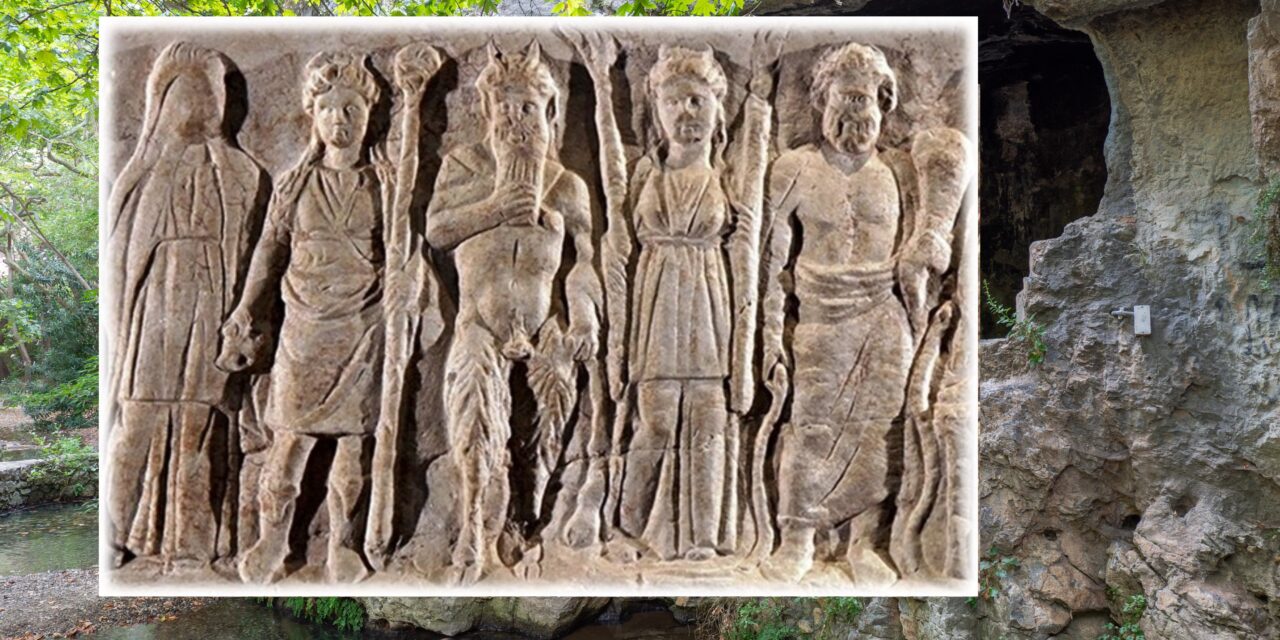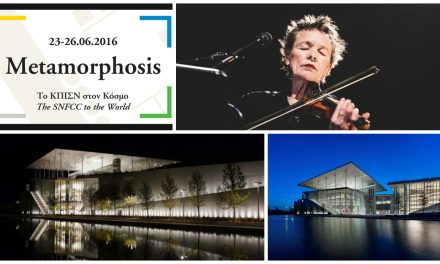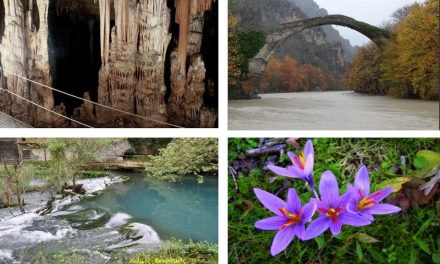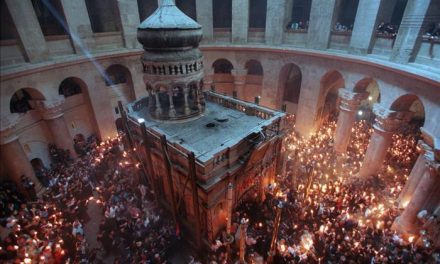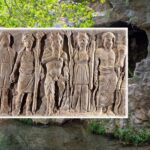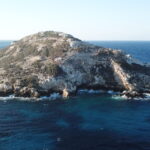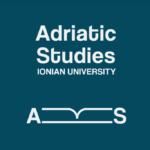In the framework of the initiative “Exhibits of the Month”, the National Archaeological Museum presents in 2025 the cycle “Priests, Rituals, and Magic in Antiquity”. Twelve “biographies” of objects from the permanent exhibitions of the Museum’s Collections, one on the 25th of each month, are presented to the Museum’s online followers and invite them to come and see these objects up close in the Museum. This month, a votive relief from the Oracle of Trophonios in Livadia is being presented.
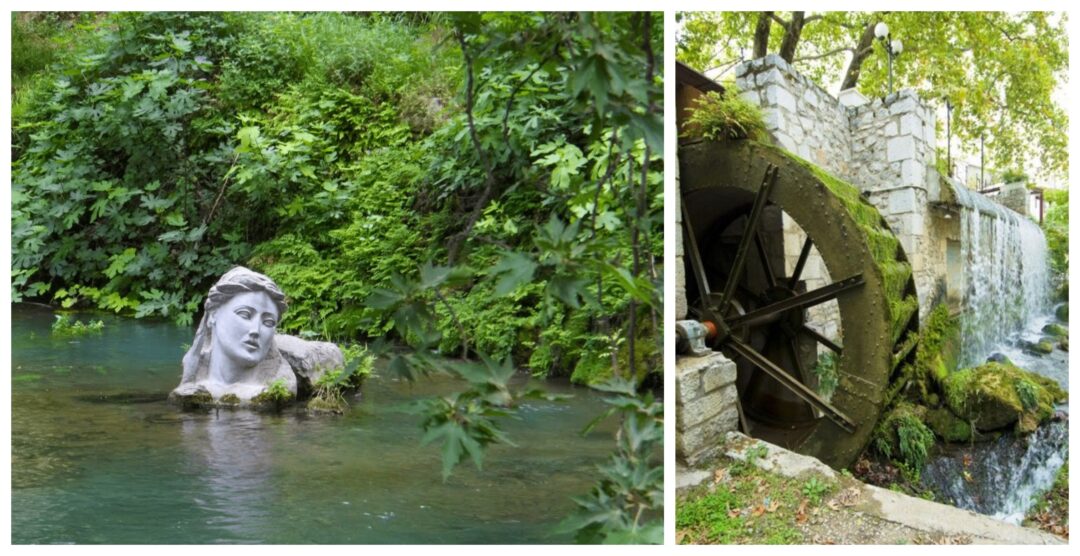
Hercyna, daughter of Trophonios, was the Naiad-nymph of the small river of the same name that still flows through the city of Livadia. Her name means “Guard Dog” or “She who Wards Off”. She was probably identified with the goddess Hekate for both were childhood companions of the goddess Persephone and chthonic deities associated with dogs. She is mentioned as a divinity of the lower world and a secondary deity of the chthonic oracle of Trophonios. (Source: theoi.com , Photos: dimoslevadeon.gr)
Near the bed of the Hercyna River in Livadia, Boeotia (central Greece), a votive relief made of limestone was found in 1931. It is a tribute to the god-seer Trophonios (Trophonius), whose oracle was located in a cave near the river. The relief is particularly elongated with a narrow frame, roughly worked, perhaps to conventionally indicate the space of the cave in which the multifaceted representation is placed, on the theme of the initiation of a believer.
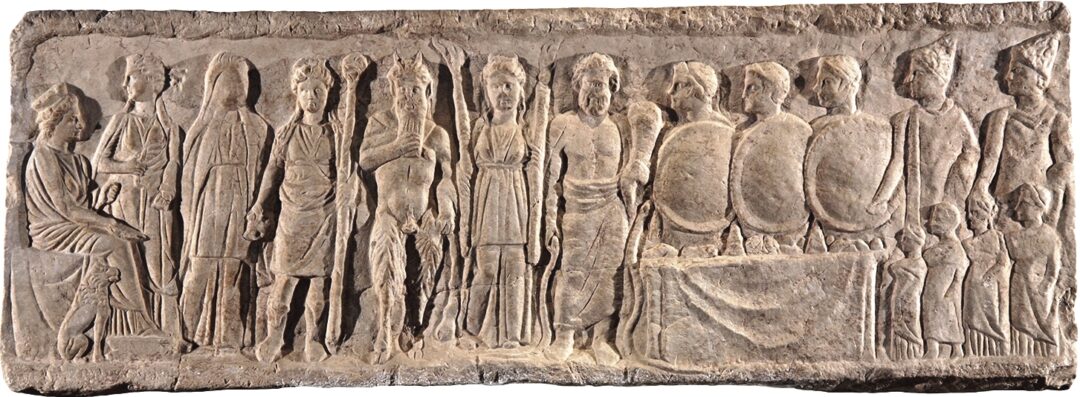
Votive relief, 0.33m x 0.93m, Sculpture Collection, 350-325 BC, Livadia, Boeotia, Room 25, Hellenic National Archaeological Museum (Aristophanes’ Nephelae, verses 506-508: …descending within, as if into the cave of Trophonios…)
Twelve divine and four human figures are represented, the latter on a much smaller scale. From left to right, Cybele is depicted first, seated on a throne, with a lion, her sacred animal and symbol, next to her. The second, standing female figure holds a key, a distinctive symbol of the priestesses. Next to her is the initiate, with his head and face covered with a veil, dressed in a long chiton and a short one over. The young Dionysos follows, holding a kantharos (drinking-cup) in his right hand and a thyrsοs in his left (a pinecone tipped staff, crowned with ivy and vine leaves at the top, a symbol of the god Dionysοs). Next to him is the goat-legged and horned god Pan. Hecate follows, holding torches in her hands. In the center of the relief, Trophonios is depicted with a horn in his left hand, flanked by snakes that rise from the ground. On the right side of the scene, a table of offerings with delicacies on it, popana (cakes related with religious ceremonies and chthonic worship) and plakountes (a type of sweet made from honey or cheese, offered to gods and heroes, and playing a primary role in the ritual of sacrifices). Behind the table, three beardless young men with helmets and shields. At the right end of the scene, two men with chlamydes (men’s cloaks) and helmets on a conical form (pilos), the Dioskouri. In front of the latter, on a much smaller scale, four worshippers are depicted, probably the family of the donor/ initiate. (Source: National Archaeological Museum)
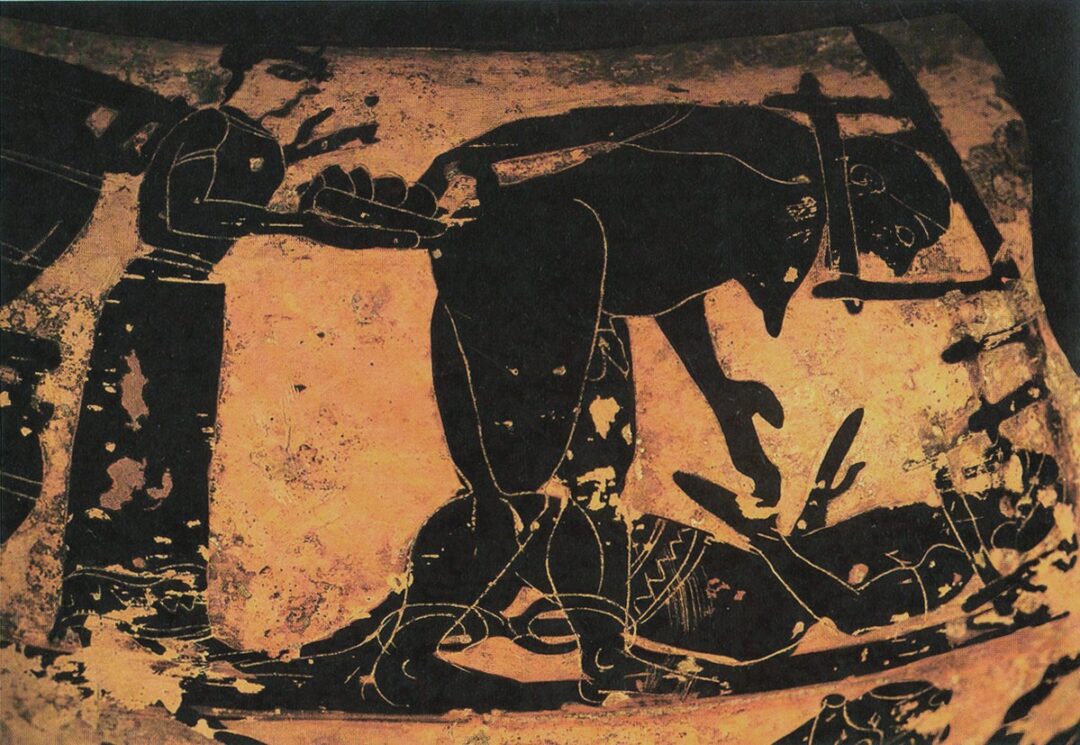
Detail from a Corinthian black-figure krater from the 6th century BC. Two men, believed to represent Trophonius and Agamedes, trapped by their heads, appear to be locked in some sort of treasury. A woman approaches to offer food. Paris, Louvre Museum.
There are two mythical versions of Trophonios (his name means “Nourisher of the Mind”). In the earliest, he and his brother Agamedes were the architects of the Temple of Apollo at Delphi. In the second, they built the treasury of Hyrieus in Tanagra, Boeotia and secretly stole from it. When Hyrieus set a trap, Agamedes was caught. To save his brother from the torture, but also to prevent the identity of the thieves from being revealed, Trophonios beheaded him. Fleeing, Trophonios mysteriously disappeared into a trench in Boeotia, where his oracle was later established. Those brave enough to endure the terrifying descent received prophecies there. (Source: National Archaeological Museum)
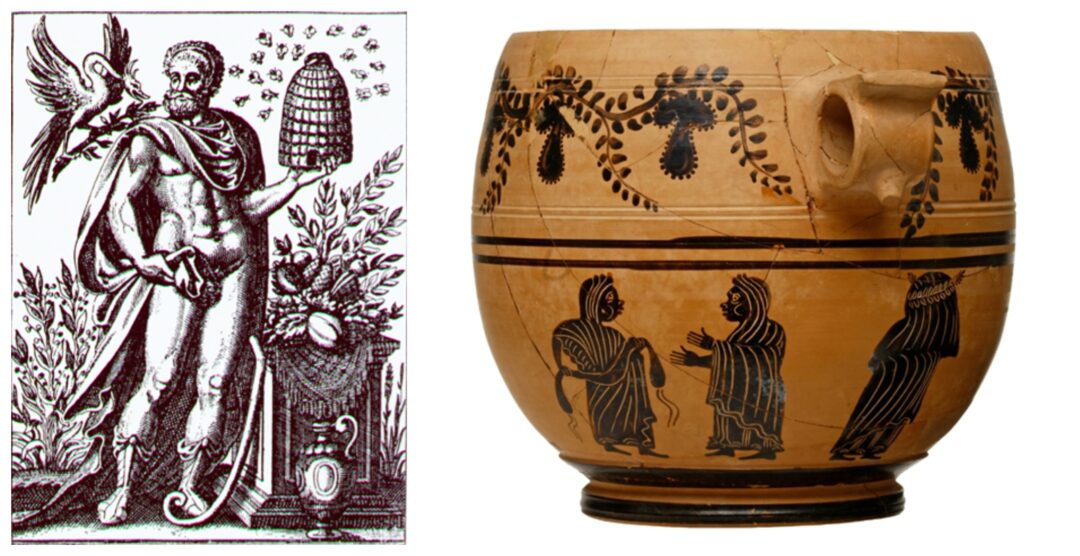
Depiction of Trophonios in Historia Decorum Fatidicorum, Geneva, 1675. According to Pausanias, the oracle’s discovery came after a drought when Boeotian envoys, directed by the Pythia in Delphi, found the oracle with the help of a bee swarm, led by Saon from Akraifnius. Trophonius initiated him and the oracle became established. According to the ritual, honey-cakes were brought by suppliants to the oracle to placate the sacred serpents (Source: theoi.com) (left), Kabiric skyphos with a scene related to initiation. The initiate approaches from the right, with his head and face covered, end of 5th c BC, Vase collection, National Archaeological Museum (right)
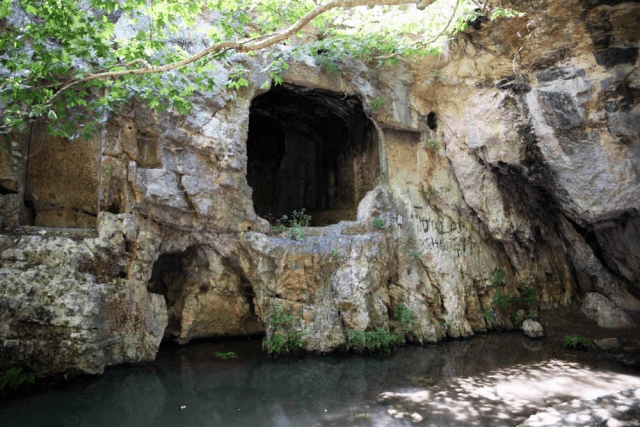
Livadia. Niches for the placement of offerings, carved into the rock of the medieval fortress, in the area of the sacred temple of Trophonios. (Photo: Photos: Foundation of the Hellenic World)
References to the oracle of Trophonios and the form of his worship are mentioned in several passages of ancient Greek literature, from the 5th century BC to the 2nd century AD ( Aristophanes’ Nephelae, verse 506: “First give me a honey-cake, for to descend down there sets me all a-tremble; it looks like the cave of Trophonios.”). The most complete description of the oracle and its ritual belongs to the writer Pausanias (2nd c AD), who not only visited it, but also received an oracle himself. (Source: National Archaeological Museum)
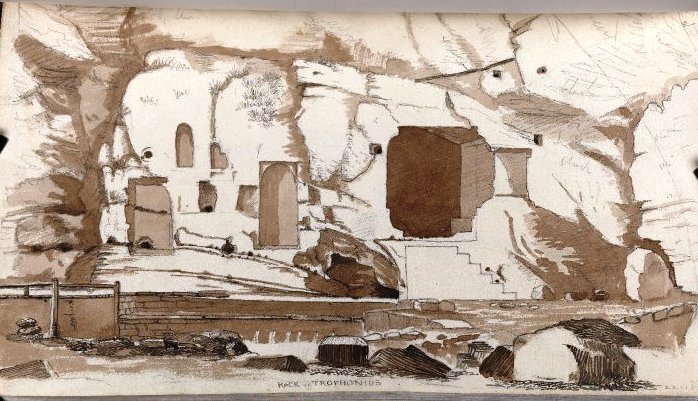
William Gell, The cave of Trophonios, c.1801-1813, © The Trustees of the British Museum
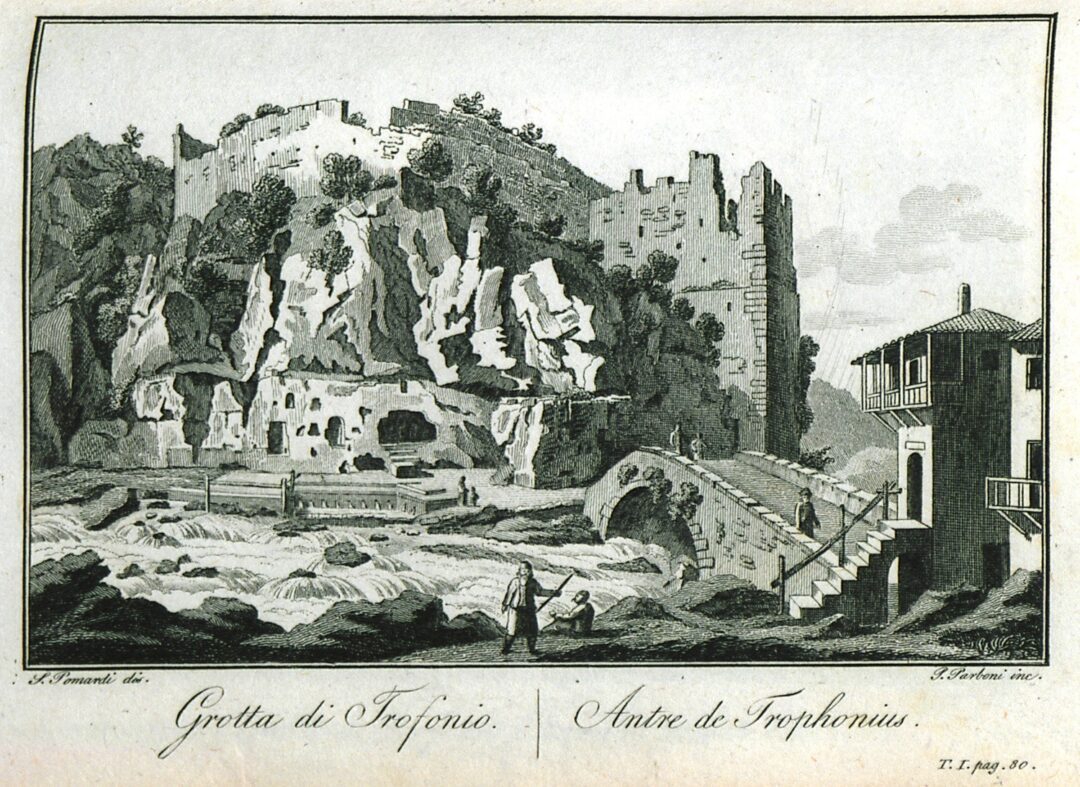
Simone Pomardi, Grotta di Trofonio/Antre de Trophonius,1820, Viaggio nella Grecia fatto da Simone Pomardi negli anni 1804, 1805 e 1806. Rome, Vicenzo Poggioli, 1820
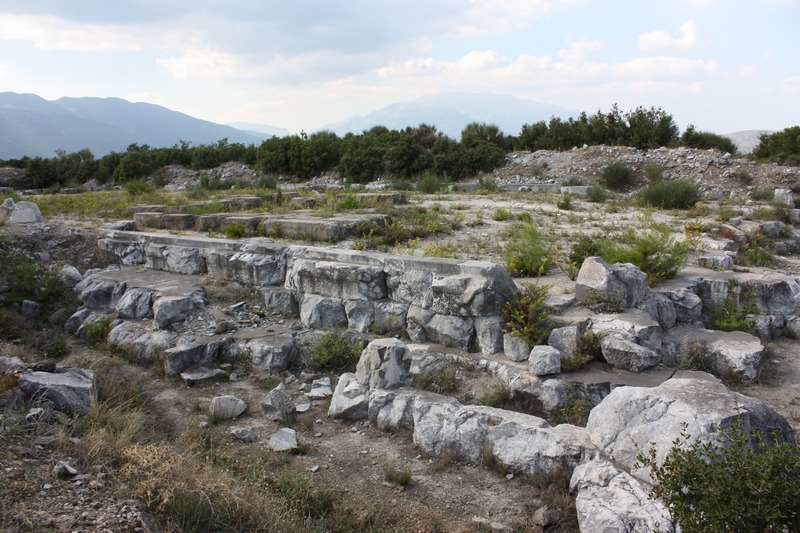
Livadia. The southeastern section of the foundations of the Temple of Zeus Vasileos (King). (Photos: Foundation of the Hellenic World). The remains of the unfinished temple of Zeus are located to the west on the outskirts of the sacred grove of Trophonion, on the top of the hill of Prophet Elias. According to the grandiose plan, the temple was of colossal size (60m x 23m), one of the largest ever built in Greece. Probably, the effort was abandoned in the first quarter of the 2nd c BC due to the gradual decline in the power and importance of the Boeotian Koinon, and the lack of money for the construction of such a large building (Source: dimoslevadeon.gr)
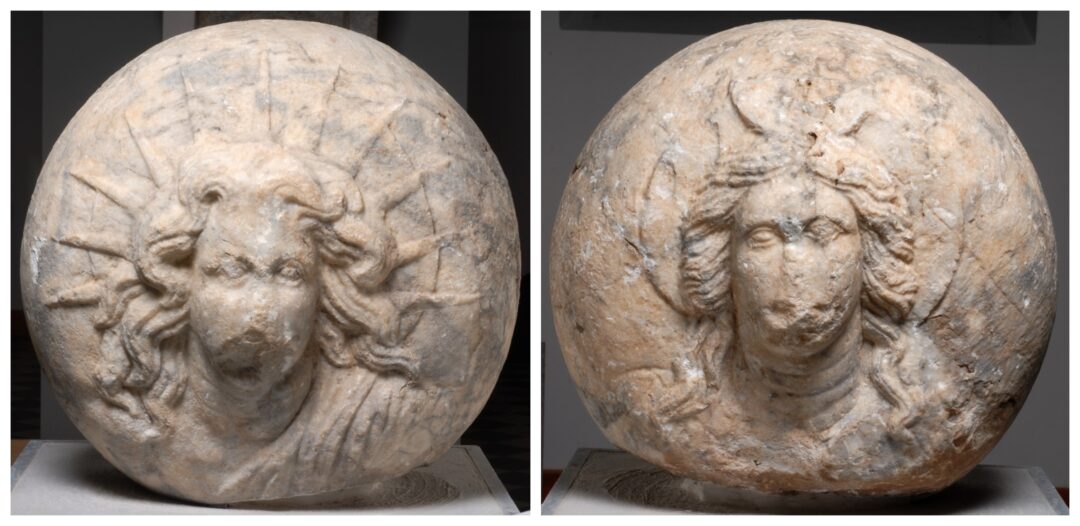
Livadia, Spherical stones with personified representations of the Sun and the Moon, 1st c BC – 1st c AD, Archaeological Museum of Chaironeia. (Photos: Foundation of the Hellenic World)
The temple, the holly grove, the oracle of Trophonios, and surrounding buildings were located near the springs of Erkyna (now Krya) in Livadia, extending possibly to the nearby gorge and medieval castle hill. The site has been lost over time, with only epigraphic and philological sources providing insights into its structure and function.


The complex ritual of the Trophonius Oracle. (Photos: Foundation of the Hellenic World). Watch the video: https://youtu.be/7c_wNTG3o6w
Pausanias notes that many elements of the oracle’s complex ritual were still practiced in his time. Seekers first stayed, for a certain number of days, in a house dedicated to the Good Daemon and Good Fortune, where they followed the established rules of purification rituals: bathing in the Erkyna waters, making sacrifices to Trophonios, his children and various gods, and having animal entrails examined for omens. After a final sacrifice in the “pit of Agamedes,” they descended into the oracle cave. The descent (katavasis) was a purification ritual. The seekers, guided by two thirteen-year-old boys from the city, bathed, were anointed with oil, and drank from the Lethe and Mnemosyne springs to forget all their worries and later remember their experience. They prayed before the cult statue of Trophonios by the sculptor Praxiteles, resembling Asclepius with a scepter and snakes, and then dressed in a linen tunic, crawled into a narrower, dark, cavernous opening, offering sweets to the god’s serpents. No one knows what happened during their underground stay. Afterward, when the oracle-seekers came out, probably unconscious, the priests questioned them about their dramatic experience, interpreting it and allowing them to regain strength before leaving. The seekers recorded their experience on tablets left in the sanctuary. (Source: dimoslevadeon.gr, Foundation of the Hellenic World)
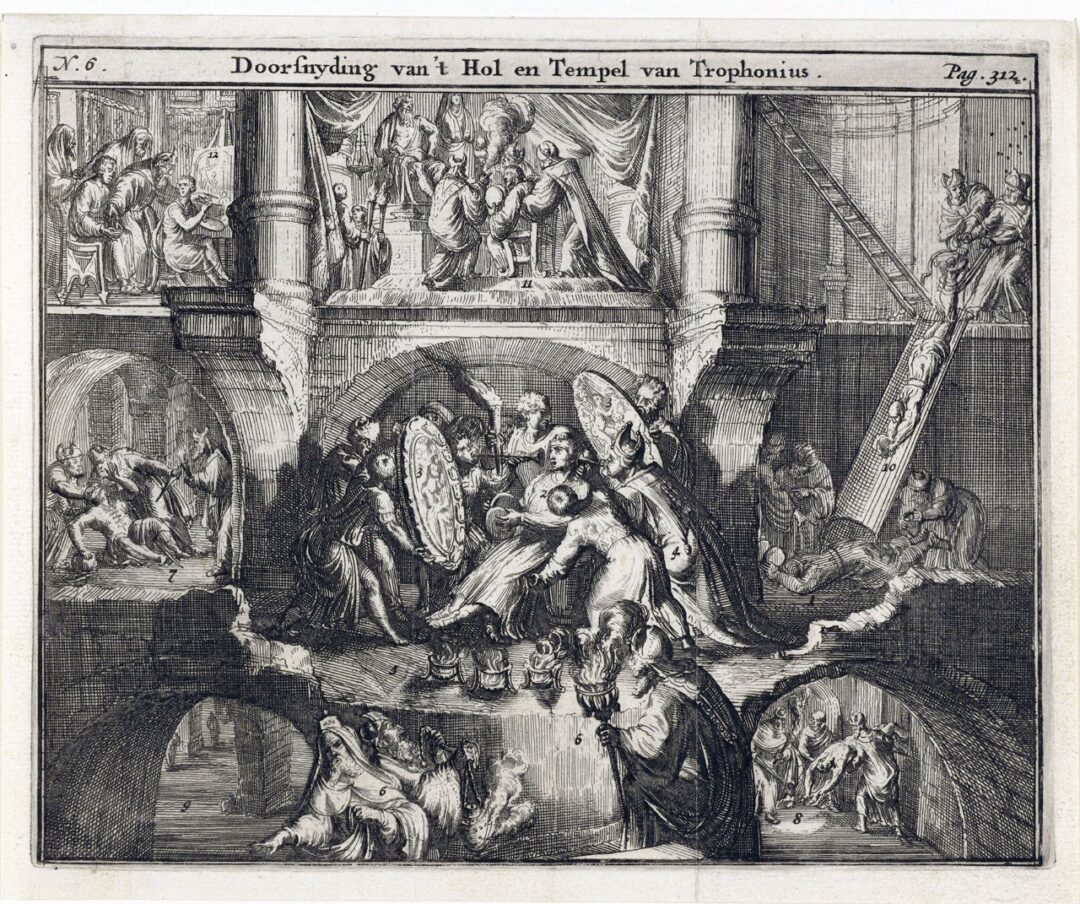
Romeyn de Hooghe, The temple, the holly grove, oracle of Trophonios, 1687, Rijksmuseum

Livadia is the capital city of Boeotia, situated at an altitude of 160 meters and 130 km from Athens. It lies at the foot of Mount Helicon, with the small River Erkynas flowing through it. The presence of nature in the city is striking. Dominating the skyline is the Medieval Castle, perched on Prophet Elias hill, which offers a breathtaking view of the surrounding green landscape. The area of Krya, where the gorge through which the Erkynas River flows ends, is a special place— a natural park with dense vegetation and small waterfalls. Additionally, within the gorge is the Ancient Theater of Livadia, known for its excellent acoustics, which hosts many events during the Trophonia Festival in the summer. Several archaeological sites from different periods provide visitors the opportunity to explore the city’s rich history.
Read also: Archaic Period – Society – Apollonian Oracles and Archaic Period – Society – Oracular Methods (Source: Foundation of the Hellenic World)
Delphi: the navel of the ancient world
I.A.
TAGS: ANCIENT GREECE | ARCHAEOLOGY | MUSEUMS | ORACLE | TOURISM

